Tag Archives: BOEM

Massive turbine power being built off NY coast despite Trump ban on offshore wind projects
A massive wind power project off the coast of New York blew past President Trump’s executive order to block or pause all new wind energy leasing in federal waterways, which opponents claim will destroy aquatic life and the commercial fishing industry. Norway-based Equinor, which already had all the necessary lease and permit approvals from the feds before Trump’s January 20 executive order went into effect, confirmed that it has started construction at the site — laying rock as the foundation for the giant 54 wind turbines — 15 miles off the coast of Long Beach. The fishing industry also claims offshore wind farms are dangerous hot air. “The whole fishing industry economy could be lost,” said Bonnie Brady, executive director of the Long Island Commercial Fishing Association. Photos, links, more, >>CLICK TO READ<< 07:55
Save LBI Petitions Federal Agencies to Create a Safe Migration Corridor from Georgia to Maine to Save the North Atlantic Right Whale from Extinction
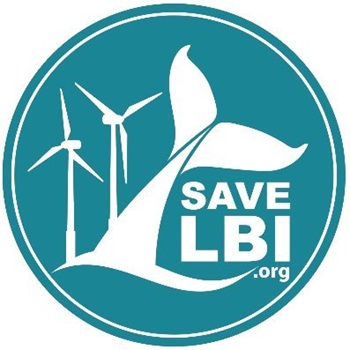 Save LBI, the non-partisan organization dedicated to protecting our oceans from the destructive impacts of offshore wind projects, has filed a petition urging the U.S. Department of Commerce (DOC)/National Marine Fisheries Service (NMFS) and Department of the Interior (DOI)/Bureau of Ocean Energy Management (BOEM) to create a safe migration corridor from Maine to Georgia that will allow the critically endangered North Atlantic right whale (NARW) to survive as a species. With a population that has dwindled to 340, the magnificent right whale is perilously close to extinction and faces a new, greater and ominous threat from numerous proposed offshore wind-turbine complexes up and down the East Coast. more, >>CLICK TO READ<< 10:55
Save LBI, the non-partisan organization dedicated to protecting our oceans from the destructive impacts of offshore wind projects, has filed a petition urging the U.S. Department of Commerce (DOC)/National Marine Fisheries Service (NMFS) and Department of the Interior (DOI)/Bureau of Ocean Energy Management (BOEM) to create a safe migration corridor from Maine to Georgia that will allow the critically endangered North Atlantic right whale (NARW) to survive as a species. With a population that has dwindled to 340, the magnificent right whale is perilously close to extinction and faces a new, greater and ominous threat from numerous proposed offshore wind-turbine complexes up and down the East Coast. more, >>CLICK TO READ<< 10:55
Beach Town Poised to Use Green Left’s Favorite Legal Strategy Against Massive Offshore Wind Project
 The town of Nantucket, Massachusetts looks set to use one of the green left’s go-to legal strategies against a massive offshore wind farm supported by liberal environmentalists. Environmental groups have used “sue and settle” tactics — wherein plaintiffs sue an aligned administration to kill a disfavored project, which the aligned administration effectively does via settlement — for decades to impede infrastructure projects they oppose. Now, Nantucket is suing the Trump administration and alleging that key procedural laws were not followed in Biden-era approvals for the massive SouthCoast wind farm off the island’s coast, teeing up a potential “sue and settle” situation that could derail a major project supported by the green left. more, >>CLICK TO READ<< 06:44
The town of Nantucket, Massachusetts looks set to use one of the green left’s go-to legal strategies against a massive offshore wind farm supported by liberal environmentalists. Environmental groups have used “sue and settle” tactics — wherein plaintiffs sue an aligned administration to kill a disfavored project, which the aligned administration effectively does via settlement — for decades to impede infrastructure projects they oppose. Now, Nantucket is suing the Trump administration and alleging that key procedural laws were not followed in Biden-era approvals for the massive SouthCoast wind farm off the island’s coast, teeing up a potential “sue and settle” situation that could derail a major project supported by the green left. more, >>CLICK TO READ<< 06:44
Fishing industry asks Supreme Court to hear case against Vineyard Wind
 A national fishing industry group and conservation think tank have petitioned the U.S. Supreme Court to take up their lawsuits challenging the approval of the Vineyard Wind project, which has been under construction since 2023. The lobbying group, Responsible Offshore Development Alliance (RODA), sued the lead government regulator of offshore wind in early 2022, alleging the agency violated several acts, including those to protect existing ocean users and endangered species. At the crux of RODA’s appeal to the Supreme Court is the language of the Outer Continental Shelf Lands Act, and particularly, how the federal government interpreted it. more, >>CLICK TO READ<< 06:52
A national fishing industry group and conservation think tank have petitioned the U.S. Supreme Court to take up their lawsuits challenging the approval of the Vineyard Wind project, which has been under construction since 2023. The lobbying group, Responsible Offshore Development Alliance (RODA), sued the lead government regulator of offshore wind in early 2022, alleging the agency violated several acts, including those to protect existing ocean users and endangered species. At the crux of RODA’s appeal to the Supreme Court is the language of the Outer Continental Shelf Lands Act, and particularly, how the federal government interpreted it. more, >>CLICK TO READ<< 06:52
Offshore Wind: Fish Problems Near Underwater Cables for Power Transmission from Blades to Land
 “Electromagnetic fields and heat from cables”, these are the two main problems of the energy transmission system from wind turbines positioned at sea to land, highlighted by a recent report by the Bureau of Ocean Energy Management, BOEM on offshore wind projects in New York Bay. In the vicinity of the cables, problems of fish behavior due to electromagnetic fields were highlighted, which were resolved once they moved away from the cables. Here’s what they write: “Previous studies have shown that EMF strength decreases rapidly with distance. Copping et al. (2016) reported that although burrowing fauna may be exposed to stronger EMF from offshore wind operations, there was no evidence that the projected EMF emitted by such devices would affect any species. more, >>CLICK TO READ<<11:24
“Electromagnetic fields and heat from cables”, these are the two main problems of the energy transmission system from wind turbines positioned at sea to land, highlighted by a recent report by the Bureau of Ocean Energy Management, BOEM on offshore wind projects in New York Bay. In the vicinity of the cables, problems of fish behavior due to electromagnetic fields were highlighted, which were resolved once they moved away from the cables. Here’s what they write: “Previous studies have shown that EMF strength decreases rapidly with distance. Copping et al. (2016) reported that although burrowing fauna may be exposed to stronger EMF from offshore wind operations, there was no evidence that the projected EMF emitted by such devices would affect any species. more, >>CLICK TO READ<<11:24

‘Revolving Door’: Biden’s Ocean Energy Chief Went to Work for Major Offshore Wind Company After Admin Boosted Industry
Amanda Lefton, the former director of the Bureau of Ocean Energy Management (BOEM), went to work for a major offshore wind company after the agency boosted the industry and worked to limit offshore fossil fuel development on her watch. Lefton spearheaded the Biden administration’s effort to build out 30 gigawatts of offshore wind capacity along America’s coasts by 2030 in her capacity as the leader of BOEM, playing a key role in the administration’s all-of-government offshore wind push from February 2021 to February 2023, according to her LinkedIn profile. She then went to work on green energy-related issues for Foley Hoag LLC, a major D.C. law firm, for approximately six months and then joined RWE, a major player in the offshore wind space, as the head of development for the east coast in July 2023. This is hardly surprising given the incestuous relations between the Biden BOEM and the wind industry. On Ms. Lefton’s watch the agency helped rush the so-far disastrous Vineyard Wind project through. more, >>CLICK TO READ<< 07:30
Letter to the Editor: US Wind project is not good for Sussex County by David T. Stevenson
 The federal US Wind Final Environmental Impact Statement concludes on page 135, “U.S. offshore wind projects would likely have a limited impact on global emissions and climate change.” So no impact on sea-level rise. US Wind claims the $200 million they will invest in building transmission lines will offer general upgrades to the local transmission systems. However, if the project isn’t built, the transmission upgrades are unnecessary. Their claim of lowering homeowner electric rates $9 per year is statistically zero given the model’s plus/minus $17 error range. Consultants employed by the Maryland Public Service Commission stated the offshore wind projects would simply replace onshore wind projects that cost 80% less. more, >>CLICK TO READ<< 08:57
The federal US Wind Final Environmental Impact Statement concludes on page 135, “U.S. offshore wind projects would likely have a limited impact on global emissions and climate change.” So no impact on sea-level rise. US Wind claims the $200 million they will invest in building transmission lines will offer general upgrades to the local transmission systems. However, if the project isn’t built, the transmission upgrades are unnecessary. Their claim of lowering homeowner electric rates $9 per year is statistically zero given the model’s plus/minus $17 error range. Consultants employed by the Maryland Public Service Commission stated the offshore wind projects would simply replace onshore wind projects that cost 80% less. more, >>CLICK TO READ<< 08:57
Fishermen may not like offshore wind, but some work for it
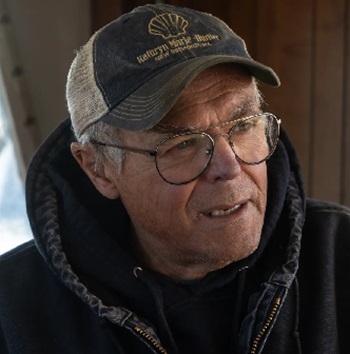 The blue-hulled scalloper, built in 1997, started out as a tender boat, transporting loads of fish between vessels and processing facilities. After a few years catching tuna, the vessel brought in over a million pounds of scallops over its life. But times, regulations and fish stocks have changed. The bivalves are still relatively lucrative, but vessels have spent more and more days sitting at the docks while expenses have risen. So two years ago, Alvernaz, the part-owner of six scallopers, put aside his personal feelings and did something he never thought he’d do: He signed up to work for an offshore wind company. In about two years, Vineyard Wind has paid about $8 million to local fishermen and vessel owners — many from New Bedford, like Alvernaz — to provide safety and security work during the wind farm’s construction (a figure that includes fuel costs). Photos, more, >>CLICK TO READ<< 06:16
The blue-hulled scalloper, built in 1997, started out as a tender boat, transporting loads of fish between vessels and processing facilities. After a few years catching tuna, the vessel brought in over a million pounds of scallops over its life. But times, regulations and fish stocks have changed. The bivalves are still relatively lucrative, but vessels have spent more and more days sitting at the docks while expenses have risen. So two years ago, Alvernaz, the part-owner of six scallopers, put aside his personal feelings and did something he never thought he’d do: He signed up to work for an offshore wind company. In about two years, Vineyard Wind has paid about $8 million to local fishermen and vessel owners — many from New Bedford, like Alvernaz — to provide safety and security work during the wind farm’s construction (a figure that includes fuel costs). Photos, more, >>CLICK TO READ<< 06:16
Worcester hiring PR firm to fight offshore wind
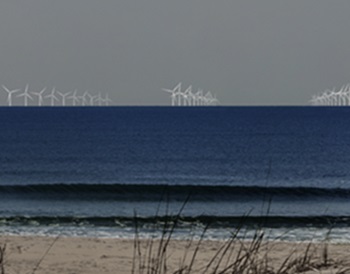 Sometimes, even David needs a public relations firm in his corner to take on Goliath. In the face of what they described as an apathetic response to Worcester County’s offshore wind concerns, the county’s Board of Commissioners on Dec. 17 voted unanimously to contract with Bedrock Advocacy Communications, a public relations firm based in Virginia. The agency will help with grassroots mobilization, strategic communications, and online engagement for a 2025 campaign to oppose ongoing wind farm development off the Atlantic Coast, according to Worcester County Chief Administrative Officer Weston Young. Young said when it comes to protesting the planned 114-turbine wind farm by developer US Wind, there have been a lot of grassroots efforts, but none that were coordinated. He said Bedrock will serve as the campaign developer and manager, working collaboratively with representatives from Worcester County, Ocean City, and the local business community. more, >>CLICK TO READ<< 16:53
Sometimes, even David needs a public relations firm in his corner to take on Goliath. In the face of what they described as an apathetic response to Worcester County’s offshore wind concerns, the county’s Board of Commissioners on Dec. 17 voted unanimously to contract with Bedrock Advocacy Communications, a public relations firm based in Virginia. The agency will help with grassroots mobilization, strategic communications, and online engagement for a 2025 campaign to oppose ongoing wind farm development off the Atlantic Coast, according to Worcester County Chief Administrative Officer Weston Young. Young said when it comes to protesting the planned 114-turbine wind farm by developer US Wind, there have been a lot of grassroots efforts, but none that were coordinated. He said Bedrock will serve as the campaign developer and manager, working collaboratively with representatives from Worcester County, Ocean City, and the local business community. more, >>CLICK TO READ<< 16:53

2024 in review: Major milestones and epic failures mark offshore wind industry
Offshore wind did reach major milestones in 2024, with “steel in the water” at four projects. But due to an unexpected failure at sea off the Massachusetts coast, the country remains under one gigawatt of operating offshore wind power — a long way from its 2030 goal. The expected 800-megawatt contribution from Vineyard Wind 1 didn’t happen, in large part due to a catastrophic blade failure over the summer that made headlines and brought the 62-turbine project and its partial power generation to a halt. Despite this incident — and the re-election of Donald Trump, a vocal critic of offshore wind — the industry celebrated breakthroughs and earned significant investments this year, both locally and nationally. In Massachusetts, officials remain bullish. more, >>CLICK TO READ<< 06:31
Worcester launches plan to buy Ocean City fishing harbor seafood businesses, block US Wind
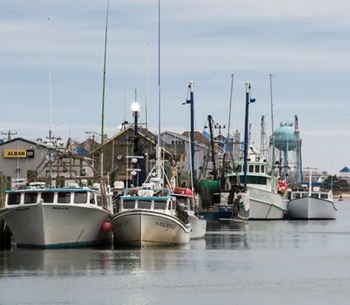 The Worcester County Commissioners on Tuesday launched what they’re hailing as “efforts to purchase two properties located in the West Ocean City (WOC) commercial maritime harbor to protect the county’s historic commercial and sport fishing industries.” Here’s what to know. These sites, which Commissioners said house the only two commercial seafood wholesalers where watermen can offload and sell their catches, are the Southern Connection Seafood and the Martin Fish Company properties. Plans for the two properties include developing a long-term lease with the existing owners to allow them to continue serving the needs of the commercial fishing industry, according to a commissioner’s release. more, >>CLICK TO READ<< 07:28
The Worcester County Commissioners on Tuesday launched what they’re hailing as “efforts to purchase two properties located in the West Ocean City (WOC) commercial maritime harbor to protect the county’s historic commercial and sport fishing industries.” Here’s what to know. These sites, which Commissioners said house the only two commercial seafood wholesalers where watermen can offload and sell their catches, are the Southern Connection Seafood and the Martin Fish Company properties. Plans for the two properties include developing a long-term lease with the existing owners to allow them to continue serving the needs of the commercial fishing industry, according to a commissioner’s release. more, >>CLICK TO READ<< 07:28
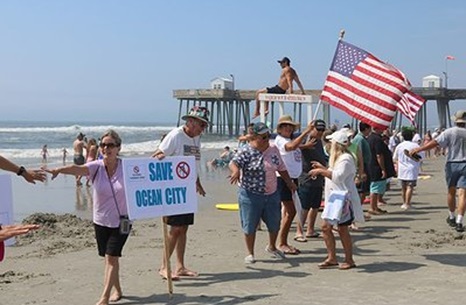
Cape May County Ends Litigation Over Failed Wind Energy Project
Cape May County has ended its legal battle against a proposed offshore wind energy farm after the state and federal agencies that had supported the project admitted it is “dead and will not be coming back to life.” The county had filed state and federal lawsuits to block the wind farm proposed by the Danish energy company Orsted 15 miles off the coast between Atlantic City and Stone Harbor. In the suits, the county alleged that the project would have caused far-reaching economic and environmental harm to the tourism industry, commercial fishing, migratory birds and marine life such as dolphins and whales. “By Orsted’s own calculation, Cape May County was facing a loss of over $1 billion in tourism revenue. Our fisheries industry was facing millions of dollars in losses. Marine mammals and other sea life were threatened with injury and harassment,” Cape May County Board of Commissioners Director Leonard Desiderio said in a news release Monday announcing the end of the ligation. Photos, more, >>CLICK TO READ<< Congratulations! 13:12
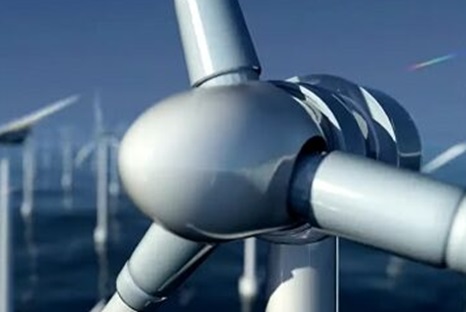
BOEM admits potentially irreversible harm to whales, fisheries, and seabirds
A government regulator recognizing offshore wind’s destructive environmental effects is as rare as a North Atlantic right whale. But a recent, 600-plus page report from the Bureau of Ocean Energy Management (BOEM) admits that the offshore wind development planned for the New York Bight, the triangular area bordered by the New Jersey and Long Island coastlines may irreversibly harm whales, commercial and recreational fisheries, and seabirds. The BOEM report is the agency’s first to evaluate the cumulative impacts of offshore wind development. Its authors cite a wide range of potential effects, from negligible (or even beneficial) to major. Acknowledging potentially “major” harms is a radical departure from the agency’s previously accepted Environmental Impact Statements for offshore wind projects, which have always focused on the impacts of individual projects, rather than the cumulative impacts of multiple projects. more, >>CLICK TO READ<< 07:28
BOEM releases potential impacts from offshore wind farm in draft environmental impact statement
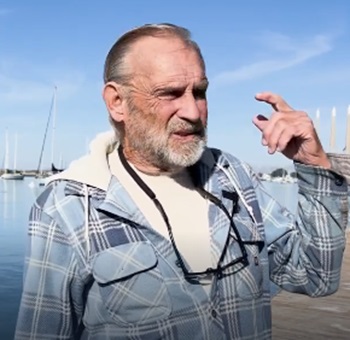 The area proposed for the Morro Bay Wind Energy Project is located 20 miles offshore and encompasses around 376 square miles. It lists air pollution from boats, construction, and equipment as one potential impact of the development. That’s a concern for the Morro Bay Commercial Fishermen’s Organization. “There will be little left for the fishing industry and also all of the ships’ traffic and debris,” said Jeremiah O’Brien, Morro Bay Commercial Fishermen’s Organization Vice President. O’Brien has other concerns with the report also citing an increased risk of injury or death to marine mammals due to vessel strikes and disturbances from underwater noise during construction. more, >>CLICK TO READ<< 13:31
The area proposed for the Morro Bay Wind Energy Project is located 20 miles offshore and encompasses around 376 square miles. It lists air pollution from boats, construction, and equipment as one potential impact of the development. That’s a concern for the Morro Bay Commercial Fishermen’s Organization. “There will be little left for the fishing industry and also all of the ships’ traffic and debris,” said Jeremiah O’Brien, Morro Bay Commercial Fishermen’s Organization Vice President. O’Brien has other concerns with the report also citing an increased risk of injury or death to marine mammals due to vessel strikes and disturbances from underwater noise during construction. more, >>CLICK TO READ<< 13:31
Ocean City continues with lawsuit following US Wind receiving final approval
 US Wind, Inc. announced Tuesday that the Bureau of Ocean Energy Management has granted final approval for the company’s Construction and Operations Plan, completing the federal permitting process for its offshore wind project. However, the project has faced significant opposition from the Ocean City community and other local organizations. The Town of Ocean City, joined by groups such as the Worcester County Commissioners, Coastal Association of Realtors and the Commercial and Recreational Fishing Industry, say they will continue to move forward with a lawsuit against BOEM to challenge its approval of US Wind’s project. more, >>CLICK TO READ<< 09:41
US Wind, Inc. announced Tuesday that the Bureau of Ocean Energy Management has granted final approval for the company’s Construction and Operations Plan, completing the federal permitting process for its offshore wind project. However, the project has faced significant opposition from the Ocean City community and other local organizations. The Town of Ocean City, joined by groups such as the Worcester County Commissioners, Coastal Association of Realtors and the Commercial and Recreational Fishing Industry, say they will continue to move forward with a lawsuit against BOEM to challenge its approval of US Wind’s project. more, >>CLICK TO READ<< 09:41
Supporters, Opponents of Offshore Wind Both Look for Hopeful Signs in Trump Administration
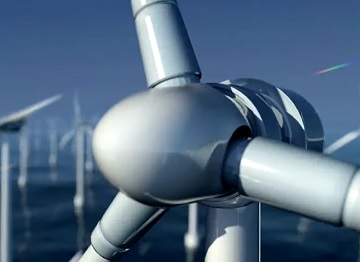 On the day after the elections last week, and even before, the airwaves were crammed with speculation about how this, that, and the other sectors of American life and the economy would fare under a Trump administration. The chatter included the future of offshore wind, which was born in the United States in 2016 off the coast of Block Island and continues to generate heavy support and heavy opposition. President-elect Donald Trump has expressed hostility toward offshore wind and has said he would put an end to the industry “on day one” of his administration. Trump-supporting Republicans have vowed to put an end to President Joe Biden’s 2022 Inflation Reduction Act, including tax credits for big projects such as offshore wind. A large share of the IRA’s $891 billion price tag is targeted toward renewable energy and related technologies. more, >>CLICK TO READ<< 07:53
On the day after the elections last week, and even before, the airwaves were crammed with speculation about how this, that, and the other sectors of American life and the economy would fare under a Trump administration. The chatter included the future of offshore wind, which was born in the United States in 2016 off the coast of Block Island and continues to generate heavy support and heavy opposition. President-elect Donald Trump has expressed hostility toward offshore wind and has said he would put an end to the industry “on day one” of his administration. Trump-supporting Republicans have vowed to put an end to President Joe Biden’s 2022 Inflation Reduction Act, including tax credits for big projects such as offshore wind. A large share of the IRA’s $891 billion price tag is targeted toward renewable energy and related technologies. more, >>CLICK TO READ<< 07:53

New Report Suggests “Whale Psychiatrist” Trump May be Right About Wind Farms and Whales
US Bureau of Ocean Management report says whales, dolphins, birds and bats can all be injured by wind turbine construction, and offshore fishing harmed. Trump has been an advocate for keeping America clean and healthy. He has not advocated for the anti-carbon push based on pseudoscience and the rush into green energy projects put forth by environmentalists. Admittedly. the National Oceanic and Atmospheric Administration (NOAA) has officials saying they have found no evidence linking offshore wind turbines to whale deaths. However, a new report from the U.S. Bureau of Ocean Energy Management (BOEM) has just released a new report that said whales, dolphins, birds and more can be exposed to “unavoidable adverse impacts” by the construction of offshore wind farms. more, >>CLICK TO READ<< 08:50
New Federal Report: Offshore Wind Farm Construction Can Harm Whales, Birds, Fisheries – >>CLICK TO READ<<
Four offshore wind-power sites in Gulf of Maine auctioned for $22M
 Two energy companies have won leases for 327,096 acres of federal waters off Maine and Massachusetts and hope to install floating wind-power turbines there. On Tuesday, four of eight available lease areas were sold to provisional winners in an auction by the U.S. Department of the Interior’s Bureau of Ocean Energy Management. The sales resulted in winning bids of over $21.9 million. The leases include commitments to workforce training and building a domestic supply chain, which would include an offshore wind port and supply chain facilities, according to a separate news release. more, >>CLICK TO READ<< 06:56
Two energy companies have won leases for 327,096 acres of federal waters off Maine and Massachusetts and hope to install floating wind-power turbines there. On Tuesday, four of eight available lease areas were sold to provisional winners in an auction by the U.S. Department of the Interior’s Bureau of Ocean Energy Management. The sales resulted in winning bids of over $21.9 million. The leases include commitments to workforce training and building a domestic supply chain, which would include an offshore wind port and supply chain facilities, according to a separate news release. more, >>CLICK TO READ<< 06:56
Election Jitters, Industry Headwinds Undermine Biden’s Final Offshore Wind Auction
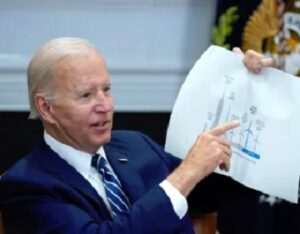 A U.S. auction of offshore wind development rights in the Gulf of Maine on Tuesday drew bids for only half of the eight offered leases, for a total of just $21.9 million in high bids, in the latest sign of deep industry malaise. The sale was a stark display of the lack of industry appetite for new investment after a year of high-profile setbacks that include canceled projects, two shelved lease sales in Oregon and the Gulf of Mexico and a construction accident at the nation’s first major offshore wind project. The auction was the last before President Joe Biden, a Democrat, leaves office in January. more, >>CLICK TO READ<< 07:25
A U.S. auction of offshore wind development rights in the Gulf of Maine on Tuesday drew bids for only half of the eight offered leases, for a total of just $21.9 million in high bids, in the latest sign of deep industry malaise. The sale was a stark display of the lack of industry appetite for new investment after a year of high-profile setbacks that include canceled projects, two shelved lease sales in Oregon and the Gulf of Mexico and a construction accident at the nation’s first major offshore wind project. The auction was the last before President Joe Biden, a Democrat, leaves office in January. more, >>CLICK TO READ<< 07:25
Ocean City, fishing clubs and Thrasher’s French Fries sue federal government over offshore wind project
 Ocean City, Maryland, neighboring towns, counties, sportfishing groups, hotels, amusement parks and boardwalk staple Thrasher’s French Fries have filed a lawsuit against the federal government for approving a massive wind farm approximately 10 miles off the tourist town’s coast. Last month, on Sept. 5, the Bureau of Ocean Energy Management, a division of the U.S. Interior Department, announced the approval of the Maryland Offshore Wind Project. It’s the nation’s 10th commercial-scale offshore wind energy project, according to the Biden Administration. The list of plaintiffs includes the mayor and city council of Ocean City, the mayor and town council of neighboring Fenwick Island, Delaware, and commissioners of Worcester County, Maryland, where Ocean City is located. Other plaintiffs include developers, hotels, commercial fishermen and seafood markets, the parent company for Ocean City’s Jolly Roger at the Pier amusement park, the Save Right Whales Coalition and the parent company for Thrasher’s French Fries. more, >>CLICK TO READ<< 16:42
Ocean City, Maryland, neighboring towns, counties, sportfishing groups, hotels, amusement parks and boardwalk staple Thrasher’s French Fries have filed a lawsuit against the federal government for approving a massive wind farm approximately 10 miles off the tourist town’s coast. Last month, on Sept. 5, the Bureau of Ocean Energy Management, a division of the U.S. Interior Department, announced the approval of the Maryland Offshore Wind Project. It’s the nation’s 10th commercial-scale offshore wind energy project, according to the Biden Administration. The list of plaintiffs includes the mayor and city council of Ocean City, the mayor and town council of neighboring Fenwick Island, Delaware, and commissioners of Worcester County, Maryland, where Ocean City is located. Other plaintiffs include developers, hotels, commercial fishermen and seafood markets, the parent company for Ocean City’s Jolly Roger at the Pier amusement park, the Save Right Whales Coalition and the parent company for Thrasher’s French Fries. more, >>CLICK TO READ<< 16:42

New Federal Report: Offshore Wind Farm Construction Can Harm Whales, Birds, Fisheries
The U.S. Bureau of Ocean Energy Management (BOEM) on Monday released a new report that said whales, dolphins, birds and more can indeed be harmed — and killed —by offshore wind farms. BOEM also warned commercial fishing could be disrupted by wind farms. The report is an environmental impact statement BOEM was required to conduct of these six existing wind farm sites that were previously approved off New Jersey/Long Island. Wind turbine construction actually does increase the risk of injury to whales, particularly the underwater noise from pile-driving during construction, the federal report found. Turbine construction can permanently damage whales’ hearing. Turbines can also lead to an “increased risk of individual injury and mortality due to vessel strikes” and entanglement in fishing gear. more, >>CLICK TO READ<< 07:36
Offshore wind looked like a sure thing for Oregon — until it wasn’t.
 A push to bring floating offshore wind technology to the Southern Oregon coast was gaining momentum. The Oregon Department of Energy saw floating offshore wind playing a critical role in the state’s, and the region’s renewable energy goals. The Biden administration had ambitious national goals for developing offshore wind, and the Oregon Coast played a key role. For the U.S. Department of Interior’s Bureau of Ocean Energy Management, or BOEM, the years-long process of identifying areas for development and selecting potential bidders to see if the technology would work off the coast was coming to a close. And then, in a single week in late September — after years of effort, and less than three weeks before BOEM officials expected to choose a company to develop offshore wind — everything fell apart. more, >>CLICK TO READ<< 13:09
A push to bring floating offshore wind technology to the Southern Oregon coast was gaining momentum. The Oregon Department of Energy saw floating offshore wind playing a critical role in the state’s, and the region’s renewable energy goals. The Biden administration had ambitious national goals for developing offshore wind, and the Oregon Coast played a key role. For the U.S. Department of Interior’s Bureau of Ocean Energy Management, or BOEM, the years-long process of identifying areas for development and selecting potential bidders to see if the technology would work off the coast was coming to a close. And then, in a single week in late September — after years of effort, and less than three weeks before BOEM officials expected to choose a company to develop offshore wind — everything fell apart. more, >>CLICK TO READ<< 13:09
It’s Time to Abandon UMaine’s Offshore Wind Scheme in Favor of Cheaper Alternatives
 The federal government this week blocked a proposal that would have allowed the Mills Administration and labor unions to bulldoze Sears Island into an industrial wind power port. Although this hard-fought victory is good news for fishermen, ratepayers, taxpayers, and the environment, it’s only temporary. The Mills Administration has given no indication that it will stop its relentless pursuit of expensive and unworkable offshore wind schemes. Depending on how Election Day turns out, the Legislature could be back at the drawing board devising other ways to enrich the wind turbine industry and destroy pristine ocean environments. So it’s worth remembering how we got here, and how Maine’s institutions and media became witting and unwitting pawns in an expensive game of crony capitalism. more, >>CLICK TO READ<< 06:35
The federal government this week blocked a proposal that would have allowed the Mills Administration and labor unions to bulldoze Sears Island into an industrial wind power port. Although this hard-fought victory is good news for fishermen, ratepayers, taxpayers, and the environment, it’s only temporary. The Mills Administration has given no indication that it will stop its relentless pursuit of expensive and unworkable offshore wind schemes. Depending on how Election Day turns out, the Legislature could be back at the drawing board devising other ways to enrich the wind turbine industry and destroy pristine ocean environments. So it’s worth remembering how we got here, and how Maine’s institutions and media became witting and unwitting pawns in an expensive game of crony capitalism. more, >>CLICK TO READ<< 06:35

NEFSA Petition Urging Janet Mills to Halt Development of Offshore Wind in Gulf of Maine Receives Over 2,500 Signatures
The New England Fishermen’s Stewardship Association (NEFSA) will be sending Gov. Janet Mills a petition with over 2,500 signatures urging her to halt the development of offshore wind farms in the Gulf of Maine, according to a source close to the matter. NEFSA is a bipartisan nonprofit organization dedicated to helping save the region’s commercial fishing industry and preserving it for future generations. Signatories on the petition include commercial fishermen, as well as residents of New England maritime communities. In a copy of the petition’s letter obtained by the Maine Wire, NEFSA CEO Jerry Leeman urged Gov. Mills to follow in the footsteps of Oregon Gov. Tina Kotek (D) by asking the Bureau of Ocean Management (BOEM) to halt its efforts to lease property off the coast. more, >>CLICK TO READ<< 07:52






 It may not have any effect whatsoever on the start of the snow crab fishery, but the courts have decided Fisheries Minister Gerry Byrne overstepped his authority by changing the deadline by which a price must be set. The issue landed before Justice Alexander MacDonald of the Supreme Court of Newfoundland and Labrador when Byrne decided to change the date from April 1 to April 13. The date is crucial because the snow crab fishing season cannot open until the price and sale terms are set, provided the opening date has also been set by the federal Department of Fisheries and Oceans. Negotiations between FFAW-Unifor, the union that represents inshore fish harvesters and plant workers in Newfoundland and Labrador, and the Association of Seafood Producers (ASP), which represents fish processing companies in the province, failed to reach an agreement on price.
It may not have any effect whatsoever on the start of the snow crab fishery, but the courts have decided Fisheries Minister Gerry Byrne overstepped his authority by changing the deadline by which a price must be set. The issue landed before Justice Alexander MacDonald of the Supreme Court of Newfoundland and Labrador when Byrne decided to change the date from April 1 to April 13. The date is crucial because the snow crab fishing season cannot open until the price and sale terms are set, provided the opening date has also been set by the federal Department of Fisheries and Oceans. Negotiations between FFAW-Unifor, the union that represents inshore fish harvesters and plant workers in Newfoundland and Labrador, and the Association of Seafood Producers (ASP), which represents fish processing companies in the province, failed to reach an agreement on price. 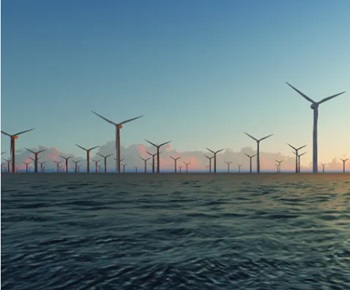
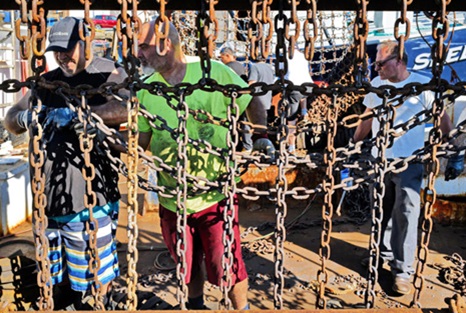



























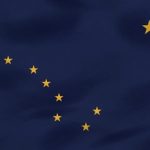


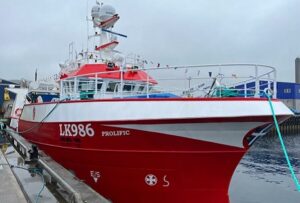
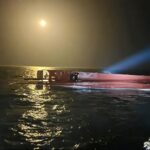
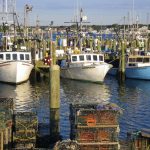



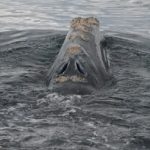

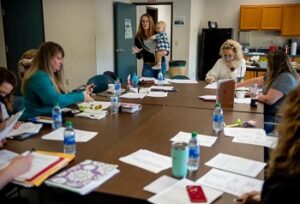



CFACT Comments on the California Offshore Wind Draft Programmatic Environmental Impact Statement (PEIS)
Share this post